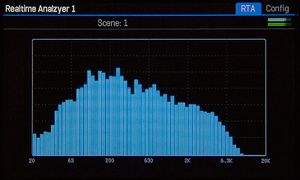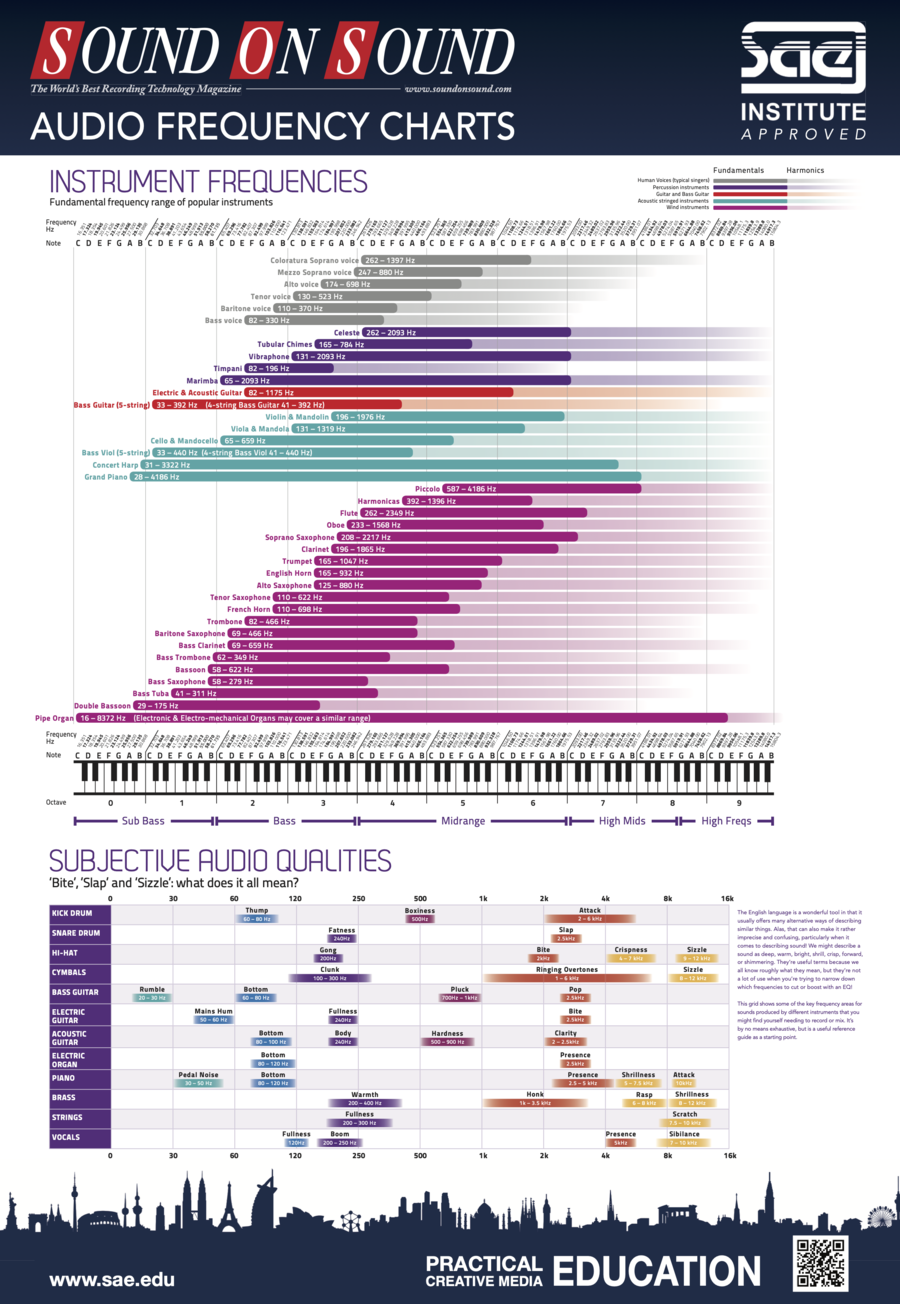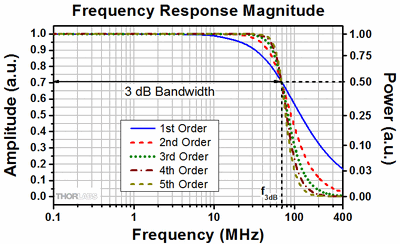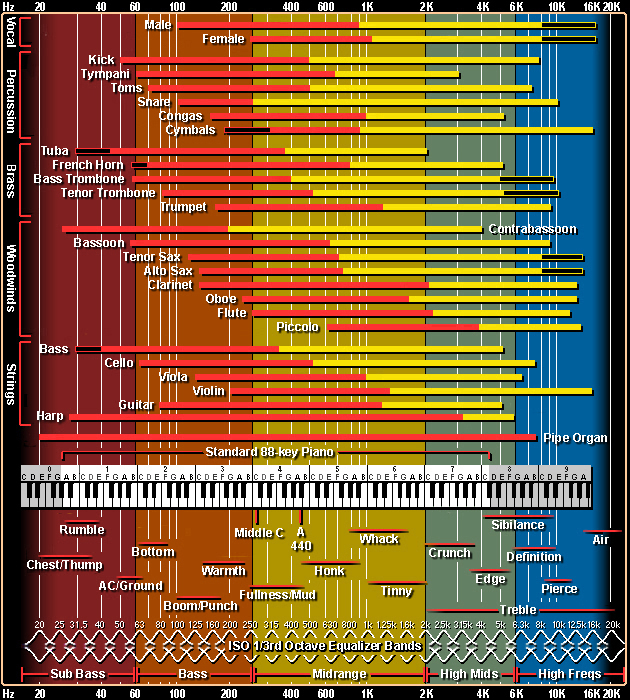This is the wiki for products made by Fractal Audio Systems, maintained by members of the community.
November 2025: the wiki is updated with AM4 data.
EQ
Contents
Parametric EQ and Graphic EQ blocks
Axe-Fx III, FM9 — 4x PEQ, 4x GEQ, 4 channels
FM3 — 2x PEQ, 2x GEQ, 4 channels
AM4 — 1x PEQ, 1x GEQ, 4 channels
VP4 — 4x PEQ, 4x GEQ, 4 channels
Axe-Fx II — 4x PEQ, 4x GEQ, X/Y
AX8, FX8 — 2x PEQ, 2x GEQ, no X/Y
AX8 — 1x PEQ, 1x GEQ, no X/Y
EQ-ing tools
The devices provide many EQ tools:
- Parametric EQ blocks (PEQ)
- Graphic EQ blocks (GEQ)
- Filter blocks
- Global EQ
- GEQ in the Amp block
- GEQ in the Drive block
- GEQ in the Wah block
- Input EQ and Output EQ in the Amp block
- preset EQ (VP4 and AM4)
- Low Cut and High Cut in several blocks
All tools are explained in the Owner's Manuals.
Graphic EQ block (GEQ)
Types:
- 3 Band Console
- 3 Band Passive
- 4 Band Passive
- 5 Band Constant Q
- 5 Band Passive
- 5 Band Variable Q
- 7 Band Constant Q
- 7 Band Variable Q
- 7 Band Pedal
- 7 Band Bass Pedal
- 8 Band Constant Q
- 8 Band Variable Q
- Band 2/3 Octave Constant Q
- Band 2/3 Octave Variable Q
- 10 Band Constant Q
- 10 Band Variable Q
- 5 Band Mark
- 4 Band JM-PRE 1
About the EQs:
- The outermost bands in all graphic EQs are shelving types.
- The 3 Band, 4 Band and 5 Band types in the Amp block and GEQ are passive EQs. Similar to analog EQs such as Pultec.
- The 7 Band and 8 Band types model popular graphic EQ pedals.
- The 10 Band, 2/3 octave types center the filter frequencies on a narrower range best suited to finely sculpting guitar tones.
- Many
classic
graphic equalizers use variable-Q designs which may be more familiar to some users as opposed to constant-Q filters. - The various
Passive EQ
types are modeled after classic analog EQs and specifically tuned for guitar amp equalization. - The 5 Band Mark type is the graphic EQ in the MESA Mark models but with better (non-authentic) sliders.
- The "7 Band Pedal" types are based on the Boss GE-7 and GE-7B.
- In current firmware, engaging and bypassing the GEQ block happens with a gentle fade.
See in the forum where Moke measured some of the EQ types.
The Master Q
parameter adjusts the Q of all bands. A value of 1.0 sets the Q to the default value, typically one octave. Lower values increase the bandwidth and overlap of each band, higher values decrease the bandwidth.
FRACTAL AUDIO QUOTES
[1] The only remaining non-authentic controls are the Mesa Mark EQ sliders I believe.
[2] The Mark series graphic EQ sucks. I know some people want authenticity but it's simply a bad design.
[3] The EQ in the Mark series sucks. It's a crude, clunky and limited design. The EQ in the Axe-Fx is far superior and much more flexible.
[4] The 4 Band JMPRE-1 type was added at the request of Dave Murray of Iron Maiden. The upper two bands of this type have more boost/cut range than the version in the Amp block.
[5] I call the Passive EQs "instant hit record tone". Something about the tone sounds like every hit record from the 70's and 80's to me.
[6] The Graphic EQ are not lowpass/highpass like the filters in the cab block. No filter is a hard cutoff, it's mathematically impossible (infinite order).
[7] (to simulate the boss ge7 or the mxr 10eq do I have to use a graphic equalizer with variable or constant Q?) Variable.
Parametric EQ block (PEQ)
Types:
- Shelving
- Peaking
- Blocking
- Shelving 2
- Peaking 2
The Shelving type recreates the analog shelving filters found on classic mixing consoles. These filters are somewhat quirky and exhibit overshoot
which gives them a certain musical quality. Set the Q between 0.5 and 0.707 to recreate those classic sounds or experiment with the Q for different amounts of overshoot. These filter types are great for getting that massive sound associated with passive equalization.
Peaking types: (source)
- Peaking: Constant Q. Q is given by f0/BW; where BW is defined as the bandwidth at the resonance gain (in dB) / 2.
- Peaking2: Variable Q. Q is given by f0/BW; where BW is defined as the -6dB bandwidth when the resonance gain = 12dB.
Setting the outer bands to Blocking
is an effective way to cut annoying low and high frequencies with a steep curve.
The gain range of the PEQ has been increased to +/-20 dB in firmware Cygnus and later.
In current firmware, engaging and bypassing the PEQ block happens with a gentle fade.
Global EQ
The Axe-Fx III, FM3 and FM9 have global EQs on each of the outputs, switchable between Graphic, Parametric and Off. The OFF state saves CPU
The VP4 and AM4 have an Output EQ in every preset.
The Axe-Fx II, AX8 and FX8 have a graphic EQ that's always active.
The Global EQs provide a master gain control that works across all presets. Use this as a quick fix when the output is clipping.
To reset the Global EQ, on the hardware:
- Axe-Fx III, FM9 and FM3
- Use the soft knobs.
- Axe-Fx II
- Press BYPASS twice fast.
- AX8
- Press ENTER to reset the selected slider.
- FX8
- Press ENTER to reset the selected slider. Press ENTER twice to quickly to reset all bands and gain.
Filter block
The Filter block also operates as an EQ tool.
Read Filter block for more information.
Tips, tricks and troubleshooting
Realtime Analyzer

Note: The Realtime Analyzer block is only available on the Axe-FX III.
The Realtime Analyzer block lets you see the effect of EQ-ing in real time.
PEQ or GEQ as Global block
Only on the Axe-Fx: if you want to adjust PEQ settings across multiple presets in one go, add a PEQ or GEQ to these presets and save it as a Global block.
Pre-EQ in Amp block
The Amp block has pre-EQ controls and provides several EQ types.
FRACTAL AUDIO QUOTES
[8] […] This was a common technique in the 80's when tracking.
If you have an Axe-Fx or other modeler with EQ options you can try it yourself. Put an EQ or Filter block before the amp. A parametric is best. Set the type to Peaking, Frequency to 1 kHz and Q to around 1 and gain to around 6 dB to start. Experiment with the parameters.
Smiley frown EQ curve
The smiley frown
EQ technique employs two EQs, where one resembles a frown and the other a smiley. Check the FM3's Dirty Shirley
factory preset.
Lo-fi sound
Use the 7-band EQ, pull the lowest 2 and highest 2 bands all the way down, push the middle 3 bands all the way up.
EQ-ing strategies
OTHER QUOTES
Jay Mitchell:
[9] There are no "magic" frequencies, but there are frequency ranges where certain types of problematic sounds lie. The range where "fizzy"sounds from distortion-generating devices generally lie is ca. 3.5-4.5kHz. This is true regardless of the type of source: tube amp, stompbox, or digital model thereof. It may seem more obvious when you play a modeler, because you can generate much higher levels of distortion at modest volumes than you can with a tube amp, but it's there with tube amps nonetheless.
There is no single frequency you can cut to reliably address this - every device and model will be different - but there is a simple procedure to identify the frequencies you need to attenuate.
- Place a parametric equalizer in the signal chain after the distortion-generating components. If you're using a tube amp, you'll need to do this to the mic'ed/recorded signal from the amp.
- Set Q to a modest value, say 4, frequency to something just above 3kHz, and level to substantial boost (ca. 6dB or more).
- Sweep the frequency range upward until you've maximized the effect and gone past the peak, then set it back to the frequency where it is at a maximum.
- Increase Q to ca. 6 and fine-tune frequency to narrow down the location of the peak.
- Bring the level down past zero, and increase cut just enough to clean up the effect. Don't overdo this.
HOW SHOULD I EQ?
Equalization can be as intricate an art as musicianship itself. Engineers, producers and artists use EQs to compliment, correct, and even create. The following simple tips will help you use EQ blocks to their fullest.
- EQ works completely differently before distortion vs. after distortion. Try it each way. Try both at once!
- If you hear something you don’t like (such as “boom” “honk” or “fizz”) use EQ to cut it. If you need help finding the frequency to cut, try boosting first, then sweep around until you find the objectionable area. Turn your boost into a cut and fine tune. Experiment with shelving, blocking or peaking types for this application.
- If a sound seems to be missing something, try adding it in with an EQ boost. You can use the same “sweeping” technique described above, but remember, “you can’t put back what isn’t there,” meaning that a change to some other aspect of the tone (amp? cab?) may be needed to achieve what you’re after...
- EQ in context and at appropriate volume levels.
Introduction to guitar EQ
OTHER QUOTES
Forum member Clarky:
[10] Graphic EQ [GEQ] and Parametric EQ [PEQ] are very different animals. This is not specific to the Axe as most reasonable quality fx-units will contain blocks that offer EQ with the same / similar functionality.
- Graphic EQ - This has multiple frequency bands where the central frequency of each is fixed.
- Example: If your guitar amp has 4 tone controls - bass, mid, treble, presence - you can think of this as being a 4 band GEQ.
- Each 'band' [tone control] effects a pretty wide range of frequencies. The 'width' [the frequencies it effects from lowest to highest] of the band is called the Q. In a GEQ you can't change this, you can simply adjust the level of each band by boosting or cutting - using +ve or -ve gain values respectively. An 8 band GEQ is more of the same but by having more bands you have more detailed control and each band's Q is therefore narrower.
- Try thinking of an 8 band GEQ as having something like - low bass, mid bass, high bass, low mid, mid, high mid, treble, presence. Likewise a 16 band GEQ would have even more controls with narrower Q values that sit in between the bands described above.
- This being the case a GEQ is pretty straight forward to use. You simply boost / cut the various frequency bands to taste.
- A Parametric EQ is far more flexible but there are a few things you need to understand to get the best out of it.
- Each band has a Q control. This means that you can change the width of the band - and therefore the spread of frequencies that a given band effects. Low Q values create a wide EQ range and high values create very narrow range. This means that you can have very general EQ control with values from 1.0 or lower [not unlike a bass control on an amp], or have precise control [usually corrective] with narrow values such as 1.8 and above.
- The 'frequency' control in a PEQ allows you to change 'where' in the frequency spectrum the PEQ band is centred [and therefore the frequencies that it acts upon]. So unlike a GEQ with its fixed bands, a PEQ band can effectively be moved up and down the frequency spectrum and made wide or narrow.
- In addition, the first and last PEQ bands can also have their filter type altered. Whereas the inner bands use a 'bell shaped curve' to effect the frequency band, the outer bands can be set to bell curves, hi-pass filters [let hi freq pass], low-pass filter [let low freqs pass] and more. This allows yet more EQ refinement.
Frequencies important for guitar:
Note: A guitar is actually a tenor instrument [despite all our music being written with a treble clef] so in general terms we can get pretty low [concert tuned]. Our low E is just a little higher than the low C of a cello [which is a bass instrument]. The numbers below are just a rough guide.
- Sub bass - This is below 80Hz - guitars actually produce sounds lower than their lowest notes via sub-harmonics etc.
- This area of the frequency specrum generates a sense of power and energy in a mix. It's the 'shock and awe' area of the mix. However too much can cause a loss of clarity. Many produces will cut everything below 50Hz to tighten the tone.
- Bass - 100Hz to 400Hz - This is where all the power is in guitar terms.
- Too much will destroy your definition and make you sound woolly.
- Low mids - 400Hz to 800Hz - This is where your thump is.
- Low mids and bass beth generate a lot of energy [electrically and in terms of moving air] and at times can get in each other's way. If you want deep bass then scoop these out a little. But beware, a lack of low-mids will get you lost in the mix. The relationship between bass and low mids is critical.
- Tip - Never lose sight of the fact that your bassist provides most of the the deep bass. So often you can get away with using less bass and more low-mid in the mix. and between the two of you there will be plenty of low stuff in the mix. It's not unusual for tones that sound killer in isolation to not sit well in a mix, and in contrast, tones that sound a little lacking in the low stuff to sound great in the mix. It's all about the different instruments leaving space for each other and inter-acting with each other.
- Mids - centred around 1KHz - This is what cuts you through the mix.
- Too much and you'll sound nasal, not enough and you'll vanish in the mix.
- High mids - Centred around 2.5KHz to 3KHz - this is where you get your definition.
- Too much and you sound shrill, not enough and the leading edges of your notes will vanish. And it's for this reason that legato centric players [in the Satriani mould] tend to like to roll off this band a little to 'warm up' and 'soften' the tone. Whereas full-on riffers, alt-picking shredders and percussive players [like funk] like this band to be a little stronger to add attack and definition.
- Treble - Centred around the 5KHz area - this adds all the sparkling highs.
- Too much becomes piercing and brittle sounding. Too little make your tone sound confined and lifeless. For those of you that create presets in stereo, it's the upper frequency ranges [high-mids, treble and presence] that convey the sense of 'spread'. The general rule is that the higher the frequency, the narrower the beam [from the speaker cone] is and therefore the more directional it becomes.
- Presence ['air'] - From 7KHz or 8KHz and up - guitars don't do a great deal up there.
- Some effects though will generate harmonics up there [especially distortion centric effects]. In the studio you'd tend to use this on the mix overall or on cymbals / synths etc. Depending on the fx you have running in the chain it is worth experimenting with this band to see if it adds or fixes something, but don't be too surprised if you do not perceive a great deal happening. I tend to think that the general tonal impact is not be as strong as with the treble bands.
Sonic Maximizer effect
Read Replicating the BBE Sonic Maximizer - A How To
in the forum.
More information
More information can be found in the following pages:
- Tomasz P. Szynalski's
Online Tone Generator
- The Wicked Wiki article
WICKED WIKI 13: Global EQ to the Rescue
- Premier Guiter's
The Recording Guitarist - The ABCs of EQ
- Wikipedia's
Equalization (audio)
- Seventh String's
Note Frequencies
- Teach Me Audio's
Audio Spectrum
- Production Advice's
Using EQ: 7 crucial EQ bands to help balance your mix
- Guitar Player's
Make Your Tone Stand Out With These Seven Pro Tips on Guitar EQ
- Guitar World's
A guitarist's guide to EQ: how to make your guitar tone bigger and better than ever before
- Rational Acoustic's
The Seven Bad System Dwarfs
- Production Advice: 7 crucial EQ bands to help balance your mix

Used with permission from Sound On Sound.
The above graphic is available directly from the Sound On Sound site as a poster in .pdf format.
Videos
See the following for more information:
YouTube's videos about EQ-ing, along with…

